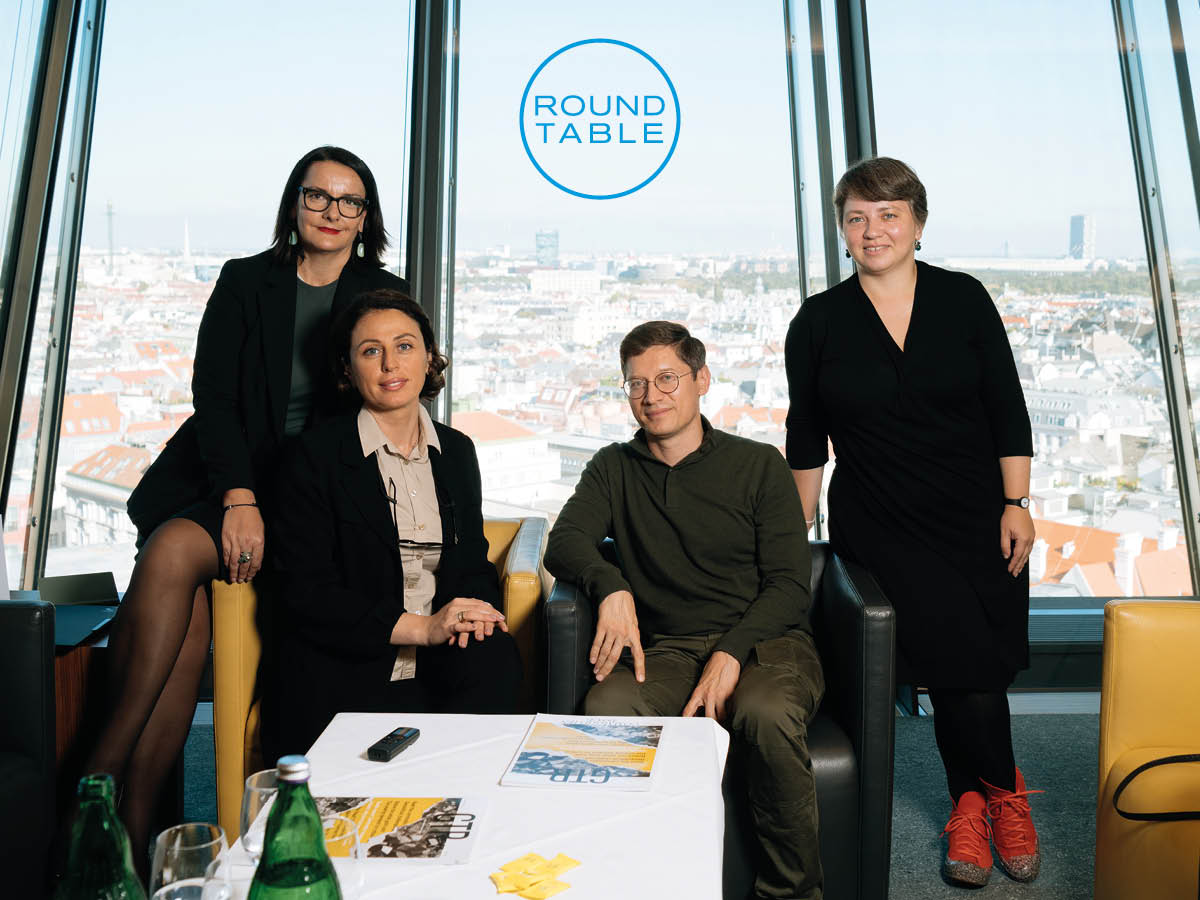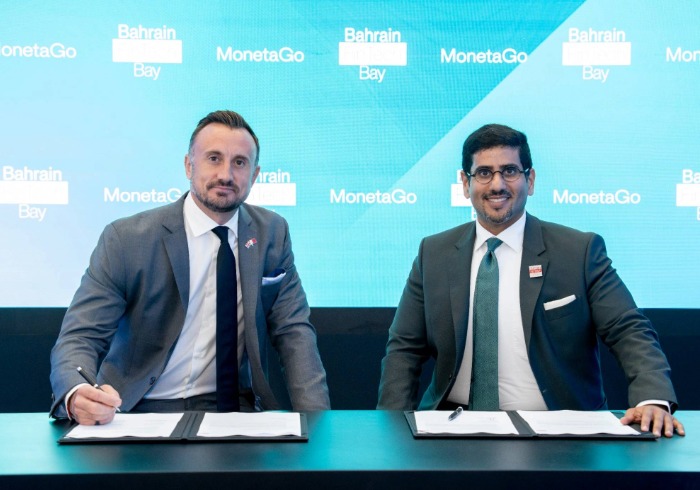Central and Eastern Europe is home to some of the continent’s fastest-growing economies. The Caucasus and Central Asia, with which many banks in the region have strong ties, feature a mix of mature and rapidly evolving trade finance markets. Although the regions are seen as promising, the invasion of Ukraine has moved them to the forefront of geopolitical tensions between Russia and the west.
In the lead up to the first GTR CEE conference in Vienna, GTR convened a group of trade and correspondent banking specialists to dissect the region’s economic trajectory, the problem of bank de-risking and the prospects for digitalisation.
Roundtable participants:
- Jacob Atkins, senior reporter, GTR (moderator)
- Elitza Kavrakova, group head institutional clients, Raiffeisen Bank International (RBI), Austria
- Ana Kavtaradze, strategic business development consultant, BasisBank, Georgia
- Maria Mogilnaya, member of CEE regional committee of the International Trade and Forfaiting Association
- Andy Romanov, deputy head of structured trade finance, Ukrgasbank, Ukraine
GTR: The CEE region is very diverse, in terms of economic development, geography and EU/non-EU members. How is the region faring in terms of economic growth? Are there some countries where you’re seeing strong trade growth and others where you’re not?
Kavrakova: It would be good to first explain the macro perspective in the CEE and Commonwealth of Independent States region. In 2024, we’ve seen total assets in the banking sector hit the impressive €2tn mark, and going forward, it’s predicted that the growth will be mid-to-high single digits per annum. To put it into a greater time perspective, in Central Europe and Southeast Europe, banking assets have doubled since 2008 so they make up approximately 5% of total assets within the EU area. However, in my view, the growth is not equal between the markets.
We have markets which are outperforming, like Poland, the Czech Republic, Slovakia, Romania, Bulgaria and Serbia. Then we have those that are lagging behind, like Croatia, Bosnia, Slovenia and Hungary. This lag is very much driven by a competitive banking environment, such as the presence of western banks in the markets, as well as the operational environment, such as political risk and governmental interventions. In terms of using trade instruments, from my perspective, the most active markets are actually further east, like Central Asia and the Caucasus. We obviously service all the CEE markets, and the big trend and growth I see is in those lesser-mentioned markets.
Kavtaradze: Just to pick up on that, it’s a very logical trend because trade finance instruments are mainly used in countries where there are higher geopolitical risks. So, it’s not surprising that in regions where the geopolitical issues are, these instruments are commonly demanded and supplied. Depending on the trade dynamics in individual countries, instruments and facilities also vary. Certain countries are quite active in import financing tools and practices, for example, while others have more of a mix of products.
It makes sense then, that advanced CEE countries do not use trade finance and trade insurance facilities for trade between themselves. The statistics show that use of trade finance instruments has been evolving, especially after the war in Ukraine. The war and the sanctions on Russia mean there are certain goods that carry higher risk and are subject
to export controls. Trade finance instruments are widely recognised for their enhanced controllability, rigorous regulation and transparency. This allows banks to efficiently monitor the entire flow and route of goods, presenting a more straightforward process compared to the complexities of executing cross-border payments. Amid the increasing pressure on banks to prevent sanctions evasion, these instruments offer significant advantages to importers, exporters and financial institutions.
Romanov: For Ukraine, there has been growth in 2024, compared to 2023, in physical terms. The volume of Ukrainian exports in the first three quarters of 2024 is 99.3 million tonnes, which is up 36% on the same period in 2023. But the value of exports only increased by 6%, which was due to growth in metallurgical products, cement, corn and wheat. Imports were much higher than exports, with the most significant expenditure being naturally on oil products, but also cars and electricity.
Right now, the EU is our biggest trading partner, which took over a lot of trade we used to do with Russia and the CIS region. China is our second-biggest partner, and we also import and export a lot through Turkey, including the grain corridor.
GTR: You mentioned that Ukraine has lost a lot of trade with CIS countries. Obviously, trade with Russia and Belarus has stopped, but has trade with other CIS countries also gone down since the invasion?
Romanov: It depends. For instance, we try to import something from Kazakhstan or export something to Uzbekistan. But those countries are really connected to Russia and our compliance department has stopped some deals because they cannot be sure that those goods are not going to Russia, or those goods are coming to us from Russia.
GTR: What is the capacity for doing trade finance in Ukraine at the moment, and how do you manage the risks?
Kavrakova: We do a lot with and for Ukraine, both out of Vienna, but also with my local colleagues in Ukraine. I’m happy to see Andy here, who is my greatest counterpart in Ukraine. But in addition to Ukrgasbank we work with 23 other banks, including all the state-owned banks, which we’ve been supporting all the time and continue to do so in terms of cash, trade and FX. Our local subsidiary is doing a lot and is the number one lender among the foreign and private-owned banks in Ukraine. It’s also the number one bank in terms of agriculture and supports all the strategic sectors like food, pharma, IT and logistics. We very much appreciate the support from the multilateral development banks (MDBs), in terms of trade out of Vienna, but also my Ukrainian colleagues have a lot of risk-sharing programmes which they use. Our aim was to keep the business running during the war to support the Ukrainian economy and we didn’t experience any break in support from multilateral banks either.
Romanov: We are a Ukrainian bank, so of course we do all kinds of business in Ukraine, including mortgages and credit cards etc, in addition to financing factories and trade. Regarding the start of the war, we had actually a lot of support from the European Bank for Reconstruction and Development, the International Finance Corporation, KfW, the European Investment Bank and other international financial institutions.
Without that support, we will not be able to provide our deals at all, because the clean limits [from commercial banks] have been closed as soon as the war started, which is natural in a war situation, because as an international bank, you do not know what will happen.
Kavrakova: If I, as a commercial bank, would follow the normal risk rating model, I would have not been allowed to do any business in Ukraine. But the fact is, we still make it happen within the risk capacity that we can get, including with the help of multilaterals.
GTR: Andy, how has your experience been with your correspondent banks; have they been able to continue support?
Romanov: Most of our banks support us, but it depends on the deals that we provide them. I would say that RBI has been among our greatest supporters, because we send them a lot of deals with advanced payments and further financing. These are very good deals, because you can be sure that the goods will come into Ukraine and there is a real trade flow.
At the beginning of the war, it was a big issue for us because the country needed fuel, gas and fertilisers.
The exporters – the counterparties of our Ukrainian clients – all want 100% advance payments, but due to National Bank of Ukraine regulations and finance requirements from our clients, we use letters of credit with financing clauses to provide advance payments
to the exporters and financing to our importers. So we asked our counterparty banks if they could confirm and finance our letters of credit, in order to get critical imports into the country. At first the EBRD and IFC helped with these special requests, and they were followed by RBI and a few other banks.
Kavtaradze: For Georgia, the current situation resonates deeply as we share a common struggle with Ukraine, whether considering current events or past challenges within the geopolitical context.
The support from MDBs has been exceptional and remains crucial. Without this assistance, as both Elitza and Andy have noted, the economic survival of the country would have been significantly jeopardised. This issue goes beyond trade finance, affecting the entire economy; even basic transactions would have become exceedingly challenging.
MDBs have set a precedent that commercial banks have followed. By assuming risks and providing assurances to large commercial banks, MDBs have conveyed a powerful message of solidarity and support. This has been particularly impactful for smaller economies. If you ask a Georgian bank about its limits for a Ukrainian bank, the response is affirmative and is a direct outcome of the robust support provided to smaller economies.
GTR: Are there regulatory issues in the CEE region that are impacting trade?
Kavrakova: I was just about to refer to Basel, because of the upcoming Basel 3.1 changes in the EU. We think these capital requirements will have an effect on trade finance as well. One of the first impacts to come is a pricing increase, at least this is what I was discussing with my product experts, so we would expect pricing revision upwards. Other than that – and this is not specific to trade finance – I’m afraid that the overall regulatory burden is not getting less.
Kavtaradze: For over a decade, regulatory treatments for trade finance instruments in Georgia have been stricter than Basel standards. This applies to well-established instruments such as letters of credit, guarantees and standby letters of credit, as well as the relatively less adopted product – factoring.
The Investor Council of Georgia, supported by international financial institutions, has spearheaded the development of a local factoring law. The National Bank of Georgia and the government are facilitating its review and adoption, alongside the creation of an electronic e-invoice registry. Although the market is eagerly anticipating these developments, experts expect factoring to remain primarily used for domestic trade, with some improvements in uptake.
One significant challenge is the regulatory treatment of factoring, equated with direct lending instruments by the National Bank of Georgia, which as we have seen has hindered its traction in other developing countries as well.
Similarly, while the Basel framework treats off-balance sheet trade finance items as less risky, the Georgian regulator imposes high capital requirements, raising costs, particularly for SMEs. Despite increased awareness and interest in factoring stimulated by the commercial banking sector through educational events, training, digital platform developments and marketing campaigns, its adoption remains limited compared to its potential. The high costs pose substantial barriers to product uptake. To address these issues, banks, both independently and through the Georgian Banking Association, are actively advocating with the regulator, questioning the stringent requirements and seeking Georgia’s alignment with international best practices.
GTR: How is the region faring on trade digitalisation? It seems Georgia is making some progress but there’s not a huge amount of discussions elsewhere.
Mogilnaya: The Czech Republic was one of the very first to conduct a public consultation when the MLETR [Model Law on Electronic Transferable Records] was still drafted, but then they stopped. They consulted with the public, and they decided maybe it’s too early. In CEE, digitalisation of documents of title and trade documents isn’t talked about much. But in terms of general digitalisation, there are some countries that are very advanced, for example, Estonia, Latvia, Lithuania and Slovakia. Ukraine is amazing, they have a lot of developments with single sign-on signatures, electronic signatures, and they’re quite open in terms of integrations. I think there will be more opportunities for progress in countries that are not yet members of the EU, because they may have more flexibility to accept and adopt MLETR, whereas existing EU members might have some legacy legislation and regulation they will have to consider and adjust.
Kavtaradze: Digitalisation is crucial, especially in light of recent sanctions. Initially, the focus was on seamless transactions during Covid-19, but now, compliance and transparency are key. Sanctions have pushed banks to enhance digital platforms to try to get better communication and transparency.
A baseline of digitalisation is essential, with a good example being electronic signatures. I fully echo what Maria has said: smaller countries can adopt lessons learned elsewhere, but institutional flexibility and governmental support and harmonisation of the digital ecosystems are vital. Without government backing, progress will be delayed and insufficient to meet market demands.
Mogilnaya: There are some interesting digitalisation situations and models around. For example in Armenia, there is one software company – a monopoly – providing a core banking system to all banks and an enterprise resource planning system to corporates. It’s a very interesting situation; banks can, in principle, acquire specific modules from foreign providers, but it is easier for them to request updates to the core banking system from this one software company. Therefore they have a lot of influence on digitalisation.
Kavtaradze: It’s a complex topic. Affordability is a critical concern for small banks, especially when faced with a monopolistic provider that controls access to local services. This monopolist enjoys a significant advantage but often lacks compatibility with other platforms. This issue requires attention in Central Asia and the Caucasus and likely needs resolution at the banking level. It serves as a cautionary signal to the market and shows the need for careful selection of core systems. Newcomers, such as digital banks, should explore their options and avoid becoming over-dependent on local systems.
Kavrakova: In general, compliance requires a lot of IT investment to remain up to date. That, in my view, puts pressure on smaller names in the region and becomes an affordability issue. This need for investment is going to remain at all levels, so it also raises the question of how viable business models are for small banks in the region.
In terms of correspondent banking there are two big parts to digitalisation: one is the operational side and making things a lot easier to work with clients. The second is the data, which I need for matching my correspondent banking relationships with my risk appetite, and defining that risk appetite. Having data end to end would also allow us to better assess risk in trade finance, both on the credit risk side and compliance risk side.
Dealing with counterparts in CIS has been a big topic since last year due to the risk of circumventions of sanctions on Russia. We’ve been analysing data with a simple tool we created ourselves that compares imports from the EU into CIS, matches the payments, and then compares the exports of these countries and other basic statistics, which has already shown very interesting results. Now we are working on an advanced tool that will attach a compliance score to a single transaction. So the more data we have, the better we can assess even a single transaction and decide if this is something we want to do or not, thus having further enhanced, data-driven, real-time transaction monitoring allowing for safer business growth.








